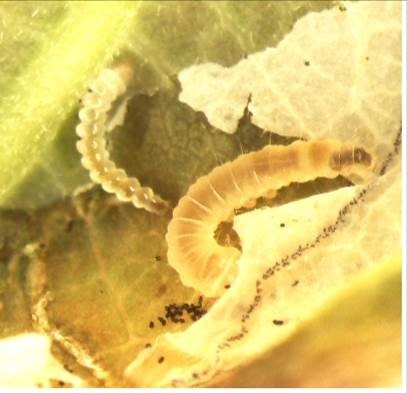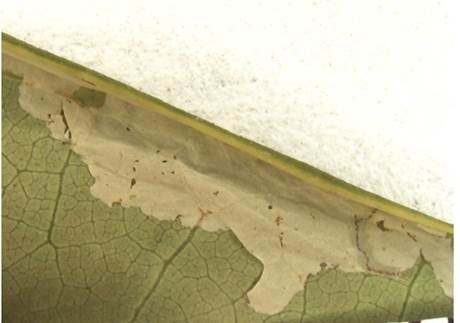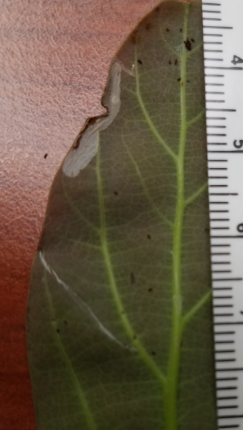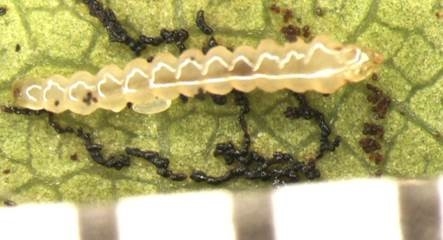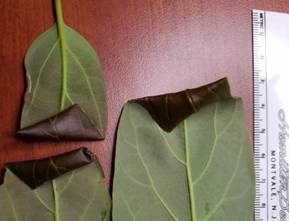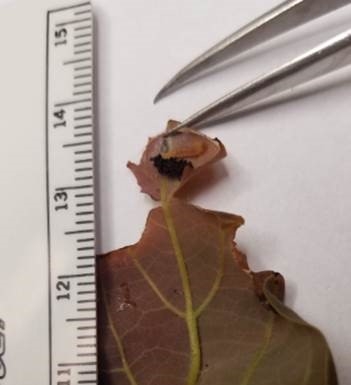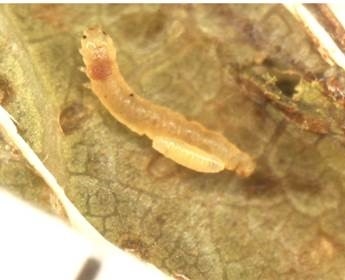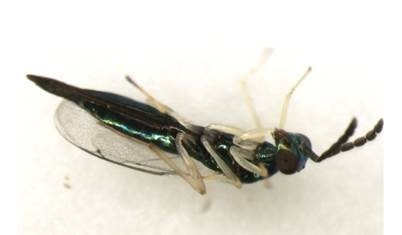
Posts Tagged: new
A New Avocado Race?
Persea americana is the botanical name for avocado. It's been traditionally subdivided into tribes or groups comprising the Mexican, Guatemalan and West Indian horticultural races. The races look, taste and even smell different, but they hybridize easily so, they are considered one species. All the breeding that is done to create more and different and hopefully better avocado trees and fruit and roots is done with these three races. Now, plant explorers have been looking in a different area of South America and think they have found a new race:
"Pleistocene-dated genomic divergence of avocado trees supports cryptic diversity in the Colombian germplasm" https://link.springer.com/article/10.1007/s11295-023-01616-8).
This study identified two ancient Colombian genetic clusters of avocados beyond the three traditionally recognized races. These cryptic groups were genetically different and presented minor heterozygosity scores, with possible origin from the West Indian group (alternatively, although less parsimonious, it could also be the case that the West Indian radiate from the Colombian group). The Colombian sub-populations are in two distinct geographic regions, the Andes and the Caribbean, which may reflect divergent local adaptation after the initial colonization from Mesoamerica during the Pleistocene. Exploring the avocado genetic resources in South America will allow identifying genotypes with superior characteristics adapted to diverse agro-ecologies, which may source the selection of new cultivars and rootstock genotypes.
It is a somewhat dense discussion of the process of identifying this new race, but it's a fun look at the sleuthing process.
https://link.springer.com/article/10.1007/s11295-023-01616-8
Image: The now extinct giant ground sloth was considered one of the major agents of avocado seed distribution before humans.

ground sloth
New Avocado Pest?
A new pest for avocado? Old pest? How much damage will it do? Don't know yet.
Tracy Ellis, the San Diego County Ag Commissioner Entomologist has partially identified what appeared to be two pest and a parasitoid, as only one pest and a beneficial that is doing it's duty going after the pest.
The insect determination has come back for both larvae (one a leaf miner and one a leaf roller) as the same insect! It has been determined to be C-rated gracillariid miner Caloptilia sp. (Lepidoptera: Gracillariidae) at this time. An image of the adult moth is not yet available.
Apparently, the larval stage transitions from a miner to a roller, in what's called hyper-metamorphosis. Starting as a miner and abandoning the mine to roll the leaf. CDFA scientist Marc Epstein is taking a closer look at this insect . Marc does not know if it is a local insect that adapted to avocados or is an import, as many in this family have not been studied or sequenced.
The leaf roller/folder has appeared down in San Diego and Santa Barbara. It's not clear whether it will be a pest of the fruit at this time.
The results for the parasite came back as Hymenoptera. That too needs greater study.
Above is a photo of both insect stages. They can be found together in the same habitat.
The damage from the leaf miner generally looks like this
And miner looks like this
The damage from the leafroller looks like this:
Larval leafroller with the parasite on it.
And the parasite , once it grows up from being a maggot, looks like this
It's still not clear what damage this might do. Maybe nothing significant. Maybe this is an aberration only for this year. Stay tuned.
What's the Next New Crop?
The common question comes up all the time – “What can I grow here that will make money?” Why not lemons or avocados. The coastal California area is generally well adapted to these crops and infrastructure and markets are developed. Still people want to diversify and do have serious concerns about ACP and other problems that might affect these two big coastal crops.
A recent class of Cal State Channel Islands students was asked to identify crops that would make a difference if introduced to the Ventura/Santa Barbara agroenvironment and would make money based on the exceptional climate here. The crop had to fit into the rules:
1) Something that could be grown here, or only with difficulty somewhere else where it was too hot/cold, or that it is out of sync with production somewhere else
2) Or the corollary, that it couldn't be grown somewhere else more cheaply or processed or stored, somewhere with cheap land/water/labor/laws. Cheap
3) It needs to be fresh and even delicate to make it hard to ship distances.
4) Or if it doesn't meet rules 1-3, it can be marketed so that it takes on the specialty of the locale. “It really cant be grown anywhere else, but here, because it can only be found in Ojai.” Or something of that nature.
So, the proposed perennial crops were:
Pitahaya – Hylocereus undatus or ‘dragon fruit' is already being grown in the county, has a good market and potential and has some drought tolerance although it can have problems in full sun, even along the coast.
Azerole – Crataegus azarolus or ‘Mediterranean medlar'. Does best where not too cold, but with those thorns its going to be a tough crop to pick and will require a lot of marketing even though it can take drought.
Yuzu – Citrus junos is a high demand fresh fruit that grows similar to standard lemon, although a bit more cold hardy. Demand is primarily from Japanese and Korean restaurants. And being citrus might be susceptible to huanglongbing.
Jaboticaba – Myrciara caulifora, a new crop, well adapted to the coast, very tasty and fits in with the locavore trend. And Fresno cant grow it unless in tunnels. And you cant eat just one.
‘Santa Rosa' plum – this is the standard Prunus salicina stone fruit, but because it is early along the coast and can be picked “just so O, ripe” for shipment to LA restaurants that would welcome an alternative to the standard tasteless store-bought fruit
Persimmon – Diaspyros kaki – one of the flat ‘Fuyu' varieties, because they crop earlier along the coast than the Central Valley. And there's nothing more satisfying than that crunch.
Moringa – Moringa oleifera or drumstick tree is often produced for oil, hence the botanical name. It can also be grown for cattle food, but the deal here is it's grown for fresh market for its spinach-like leaf and it's a perennial which you just keep on cutting and cutting and cutting and there's not replanting. A money machine.
Mulberry – Morus alba and nigra. Nothing could be more sweet, but ever so delicate than a mulberry fruit. Harvested off tarps (to comply with food safety) and shipped immediately to farmers markets and to the finest LA restaurants, you can make a bundle or a lot of permanent stain if it doesn't get to the consumer in good shape. Drying is an option, but the Turks have that market.
Tamarillo – Solanum betaceum or ‘Tree Tomato” really like coastal weather and depending on the variety can be quite sour (red) or sweet (yellow). This is one that will take some market development, but could take off as the new fruit on the block.
Hops – Humulus lupulus is a crop that most adults know about it. The grow local/drink local crowd could really get into this. There are so many small breweries looking for a distinguishing mark, and what better than a “Big Piru Pilsner with Priu Hops”. There was a small hop industry along the coast before Prohibition.
Yellow oleander – Thevetia peruviana is an unusual choice for the coast here, but it seems there's a black market for the beads and hard to get. It could be legally grown here to supply a specialty market.
Papaya – Carica papaya. This is one of those crops that has a developed market and already a lot of import to fill the demand. Growing this to go after a new consumer willing to pay more for a high-quality piece of fruit. This is going to take some market development.
Governors plum – Flacourtia indica, a new fruit to the area, although it grows as a weed in Florida. It's gonna take some marketing to get this into the mouths of consumers
According to the group of students who proposed these crops, the most likely to succeed in one year's time (immediate acceptance) was hops because of the drink local move happening here and around the country, but it would be limited to consumers in this area probably. The most likely to succeed in the long term, with market development, would be moringa. It would be a new perennial vegetable crops that could be mechanized and might come to rival spinach itself, because of it perennial nature.
Almost all of these crops could have various health benefits associated with them – longer life, improved vision, springier step, snake-bite remedy, etc. So, they all have promotion potential, aside from their ability to grow here. There are lots of other possible crops here that might rival what is currently commonly grown here. Something or things will rise to replace those that are.
At one-point Oxnard was the sugar beet capital of the world. The world's largest walnut growing area in the country was Ventura Co. and Lima was Rex here. They are all good crops, but their importance has been eclipsed many times by other crops gown here.
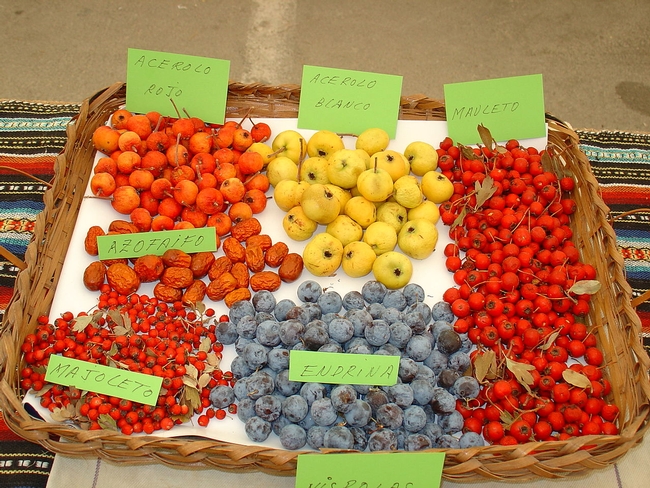
azerolo fruit
It's That Season Again When Growers Are Being Asked to Buy Products
Growers are faced with an ever-changing list of commercial “tools”, each with the promise of providing some advantage to the farmer. Frequently, these are new fertilizer mixes presented as proprietary cocktails promoted and dispensed with promises of a multitude of profitable (yet improbable) benefits to the buyer. With the large number of new products available, and the number of salespeople promoting them, it is often difficult for growers to distinguish between products likely to provide real benefit, and those that may actually reduce the profitability of the farm.
In all situations when a company approaches the University or a commodity research board with a new product or technology for sale to California growers, these institutions act as grower advocates. They are charged with sorting through the available information; asking the right questions; getting the necessary research done if the available information warrants this pursuit; disseminating accurate information on these new technologies and products, and doing all that can help maximize grower profits now and in the future. When approached with a new product or technology it is obligatory to challenge claims with the following questions:
Is there some basic established and accepted scientific foundation on which the product claims are made?
Language that invokes some proprietary ingredients or mysterious formulations, particularly in fertilizers mixes registered in the State of California, raises red flags. A wide range of completely unrelated product benefit claims (such as water savings, pesticide savings, increased earlier yield) raises more red flags. Product claims that fall well outside of any accepted scientific convention generally mean the product is truly a miracle, or these claims are borderline false to entirely fraudulent. Some of the water treatment products on the market fall into this category and can easily be checked against some of the studies found at this site: http://www.chem1.com/CQ/index.html
Has the product undergone thorough scientific testing in orchards?
Frequently, products are promoted based on testimonials of other growers. While testimonials may be given in good faith, they are most often not backed up by any real scientific testing where a good control was used to compare orchard returns with and without the product.
A “test” where a whole block was treated with a product and which has no reliable untreated control does not meet accepted standards for conducting agricultural experiments. Also, a treated orchard cannot reliably be compared to a neighboring untreated orchard; and a treated orchard cannot be compared to the same orchard that was untreated the previous crop year. Even a test with half a block of treated trees and half untreated is not considered dependable by any known scientific standard of testing.
Only a well designed, statistically replicated, multi-year trial allows for direct comparison of untreated versus treated trees with statistical confidence. Verifiable data from tests that meet acceptable standards of scientific design, along with access to raw baseline (before treatment) yield data from the same trees (preferably for the two years prior) should be used to determine the validity of test results provided.
Are the test results from a reliable source?
If the testing were not done by a neutral party, such as university scientists, agency, or a reputable contract research company using standard scientific protocols, this raises red flags. If the persons overseeing the tests have a financial interest in seeing positive results from the product, it raises red flags.
Does the product have beneficial effects on several unrelated farm practices?
A product that increases production of trees, makes fruit bigger, reduces pests, reduces water use, and reduces fertilizer costs, is more than a little suspicious. In reality, if such a product really existed, it would not need any testing at all because its benefits would be so obviously realized by the grower community that it would spread rapidly by word of mouth and embraced by the entire grower community.
Are other standard and proven farm products put down in the new product sales delivery?
If a new product vendor claims that their product is taken up 15 times faster than the one growers are currently using, or is 30 times more efficient, it probably costs 15 to 30 times more per unit of active ingredient than the standard market price. Growers should always examine the chemical product label to see what active ingredient they are buying. There has to be a very good reason to pay more for an ingredient where previously there had been no problem supplying the same ingredient at a cheaper price to trees in the past.
So what is a grower to do ?
New products come and go. Snake oil products often disappear rapidly, when their efficacy fails to materialize after application. Products that confound their purported results with fertilizers or growth stimulators can persist, but eventually they too fail to live up to expectations at some point and will fade from popularity. Try to obtain some kind of consensus with university-based research or other peer reviewed research reports, field efficacy trials that you run for yourself, and not on the testimonials of others. If you decide to conduct your own trials, they must be replicated and statistically analyzable, otherwise they are little more than anecdotal observations that have little value in quantifying the effects of a product or practice. For more help with trials, seek out University Extension advisors and specialists. This is their job, and they are willing partners in field research. After awhile, you will be able to ascertain the nature of the “oil” before you purchase it.

unknown product
USDA Loans to Help New and Unusual Agricultural Operations
USDA Farm Loan Programs
By providing access to credit, FSA's Farm Loan Programs offer opportunities to family-sized farmers and ranchers to:
- Start, improve, expand, transition, market, and strengthen family farming and ranching operations
- Beginning farmers, racial and ethnic minority farmers and women producers
- Value-added, direct sale, organic, and specialty crop operations
- Young People actively involved in agricultural youth organizations needing financial assistance for income-producing, educational, agricultural projects
- Urban farmers and roof-top producers
- Operations using alternative farming methods such as hydroponics, aeroponics, vertical farming, and freight container farming
https://www.fsa.usda.gov/programs-and-services/farm-loan-programs/
Beginning Farmers and Ranchers Loans
America's next generation of farmers and ranchers are supported through FSA's "Beginning Farmer" direct and guaranteed loan programs. Farm Ownership loans can provide access to land and capital. Operating loans can assist beginning farmers in become prosperous and competitive by helping to pay normal operating or family living expenses; open doors to new markets and marketing opportunities; assist with diversifying operations; and so much more. Through the Microloan programs, beginning farmers and ranchers have an important source of financial assistance during the start-up years.
While FSA is fully committed to all farmers and ranchers, there is a special focus on the particular credit needs of farmers and ranchers who are in their first 10 years of operation. Each year, FSA targets a portion of its lending by setting aside a portion of all loan funds for financing beginning farmer and rancher operations. With the single exception of the Direct Farm Ownership Down Payment Loan, the Beginning Farmer classification is not related to a type of loan program; it references a specific, targeted funding source.
Microloan Programs
The focus of Microloans is on the financing needs of small, beginning farmer, niche and non-traditional farm operations, such as truck farms, farms participating in direct marketing and sales such as farmers' markets, CSA's (Community Supported Agriculture), restaurants and grocery stores, or those using hydroponic, aquaponic, organic and vertical growing methods.
https://www.fsa.usda.gov/programs-and-services/farm-loan-programs/microloans/index/

fruits veg

